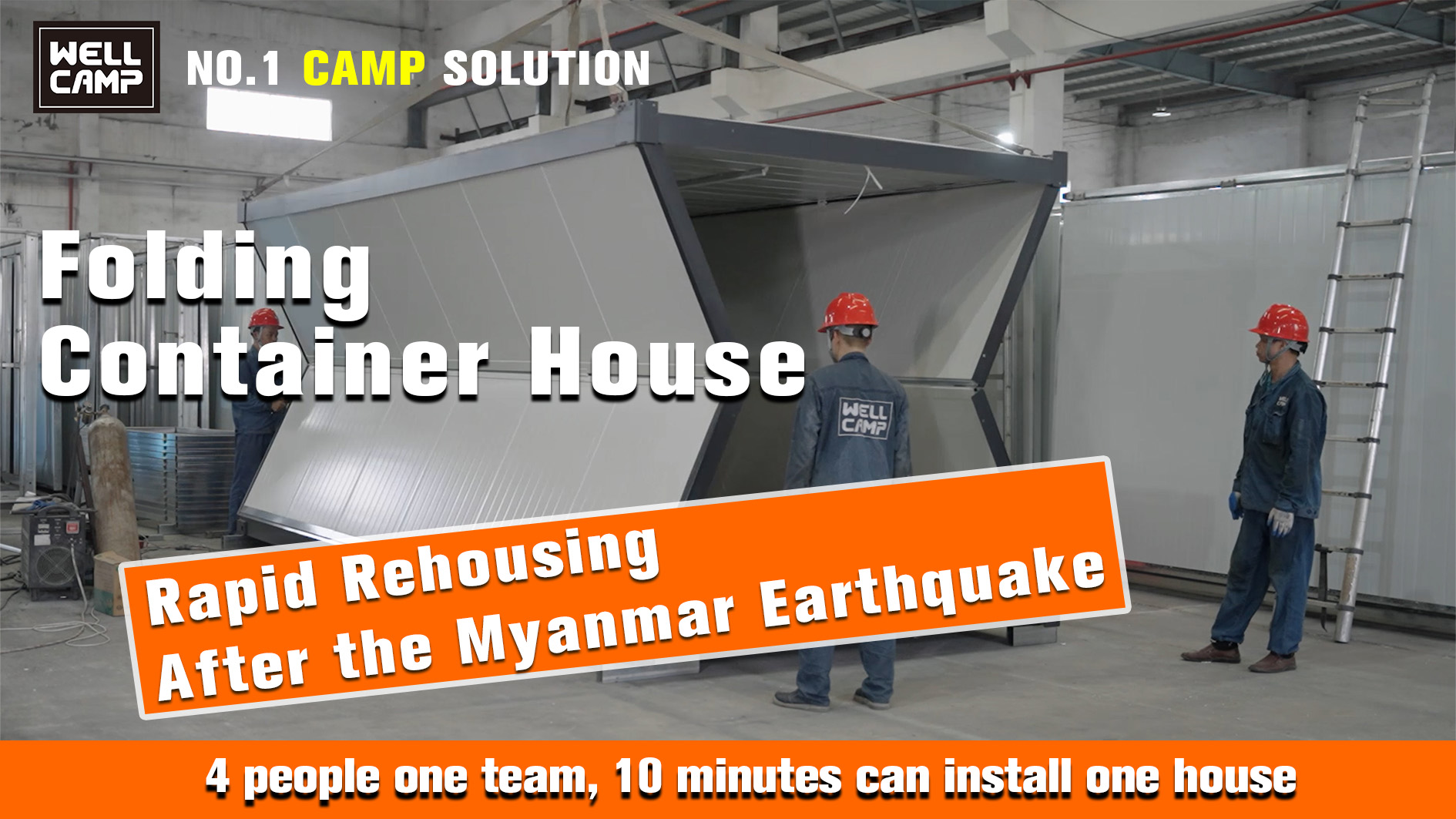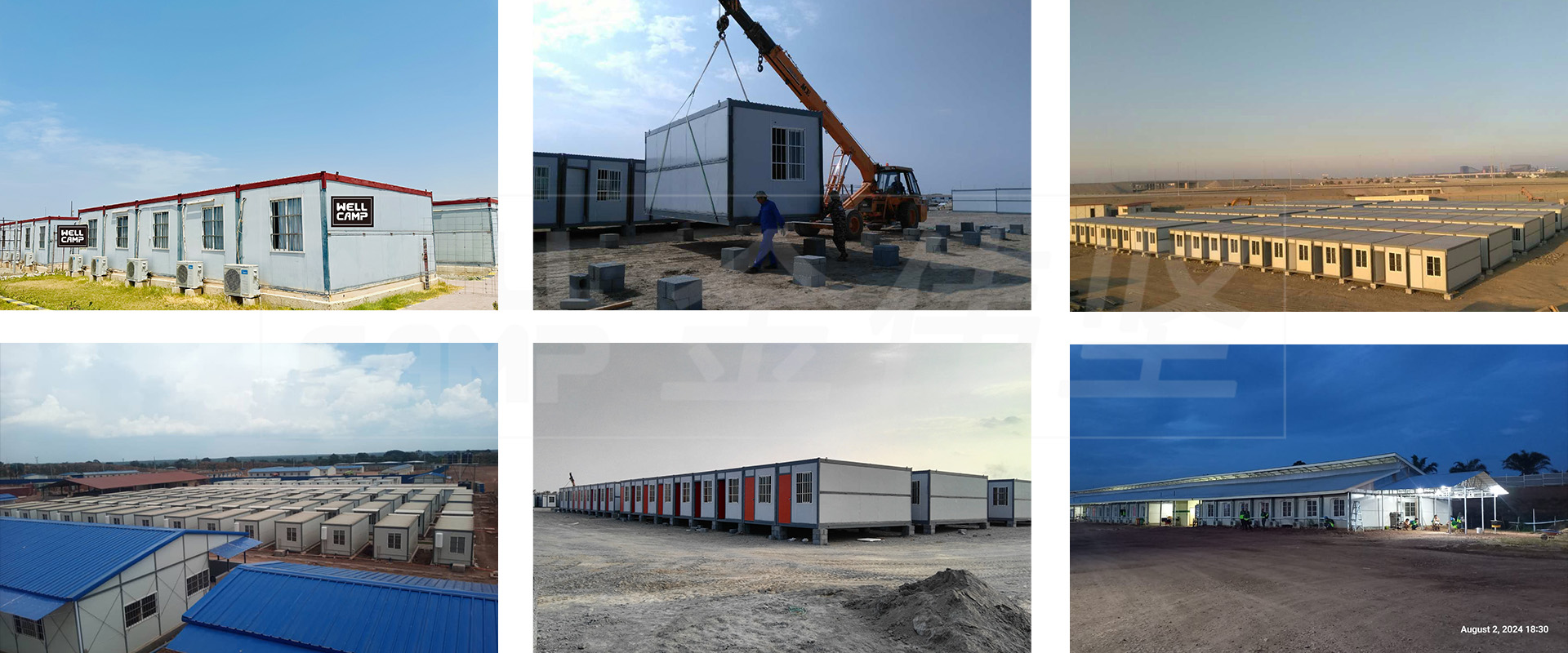Tailored Camp Solutions to Meet Custom Needs.
Magnitude earthquake destroyed Myanmar's centuries-old Palace, WELLCAMP's Folding Container houses stood
How the world's leading earthquake-resistant building makes "home" the last line of defense in a disaster

Contrast: Earthquakes shatter traditional buildings, but not the future of modular technology
At 14:20 on March 28, 2025, a 7.9 magnitude earthquake struck Myanmar with a focal depth of only 30 kilometers, killing 144 people and injuring 732 others, collapsing the palace wall in Mandalay, Myanmar, and collapsing hotels near the Jade Market. In the disaster, however, a striking contrast has emerged: traditional brick-and-mortar buildings have been destroyed, while modern modular houses have remained virtually intact. This phenomenon not only reveals the fatal weakness of traditional buildings, but also points to an irreversible trend - the future of safe housing must be modular, rapidly deployable intelligent buildings.
Experts from the China Earthquake Network pointed out that the earthquake is located in one of the most active areas of the Himalayan seismic belt, which has repeatedly experienced strong earthquakes of more than 8 magnitude in history. Faced with such frequent geological disasters, what humans need is not prayer, but technology that can truly withstand disasters.
Second, resonance scene: When the "home" has become a ruin, how much security do you have left?
Imagine this:
- You're resting at home when the ground shakes violently, bookshelves collapse, walls crack, ceiling fragments fall...
- After an earthquake, you stand in front of the ruins and find that the house you saved your life for is in ruins and will take at least six months to rebuild, if not longer.
What's more, aftershocks continue, and you can only live in temporary tents, enduring the attack of wind and rain and mosquitoes.
This is not a fictional scene, but the real experience of earthquake victims in Myanmar. According to statistics, the earthquake caused the collapse of more than 300 buildings in Mandalay, including hospitals and schools, and traditional buildings are generally less than 5 earthquake resistance. More worryingly, cities in the global earthquake belt, such as Ruili in Yunnan Province, just 310 kilometers from the epicenter, are also at great risk.
Your home, is it really safe?
In an emergency like this, a collapsible container home from WELLCAMP Steel & Modular Housing is just the solution you need.
FOLDING CONTAINER HOUSE
WELLCAMP folding container house is designed for rapid deploy, set up in 4 minutes without minimum labor. Size like a 20ft Container, 14m2 area, 1 door 2 windows but Its compact design allows 12 houses loading per 40HQ container, boosting efficiency by 80% and reducing costs. Galvanized steel structure, fireproof & Waterproof IEPS panels, insulated roof, it can be expected with a 15-20 year lifespan and over 50 folding cycles. Loading rollers make it easy to load and unload. Built-in lights, sockets, switches, and wiring for conveniences. Ideal for offices, dormitories, mining camps, refugee camps, and restrooms.
Disaster cannot be forewarned, but technology can prevent it.
Conclusion: Choosing WELLCAMP is choosing absolute control over the future
As images of the rubble of the Myanmar earthquake spread across the globe, we wondered: If all buildings were built with Mountain House technology, could casualties be reduced by 90 percent? WELLCAMP uses steel modules to write the answer: Real security is not a fluke, but the power of technology.
"We are not building houses, but Noah's Ark in the midst of disaster."
Contact: Siwen Chen
Tel: +86 13902808995
E-mail: siwenchen@chinawellcamp.com
Address: Unit 804, 8th Floor, Block A, 115 Jihua 4th Road, Chancheng District, Foshan City, Guangdong Province, China
Factory Address: No.7 Wende 4th street,Dawang High -Tech Zone, Zhaoqing, Guangdong, China











